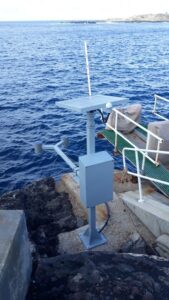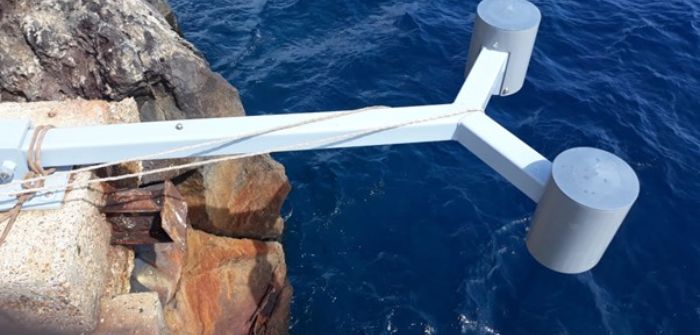The UK’s National Oceanography Centre (NOC) has installed a new tide gauge on the remote Ascension Island in the South Atlantic Ocean.
Ascension Island is uniquely located in the middle of the Atlantic Ocean, 1,000 miles from the coast of Africa and 1,400 miles from the coast of South America. The data from the upgraded tide gauge, installed as part of the Climate Linked Atlantic Sector Science project (CLASS) program, will provide scientists with open-access high frequency observations on the region which has historically been under sampled. The South Atlantic Ocean has no dedicated warning system for coastal hazards such as tsunamis, meaning the data will also be vital for operational monitoring.
 With Ascension Island known to be a notoriously harsh monitoring environment, NOC scientists overcame many installation challenges including a closed airport runway and extended Covid-19 restrictions. Although the Ascension government had lifted Covid restrictions in early 2023, airport restrictions remained in place, meaning only flights from the neighboring island of St Helena were permitted. Using local contacts built over many years, NOC scientists were able to remotely design and co-ordinate the installation.
With Ascension Island known to be a notoriously harsh monitoring environment, NOC scientists overcame many installation challenges including a closed airport runway and extended Covid-19 restrictions. Although the Ascension government had lifted Covid restrictions in early 2023, airport restrictions remained in place, meaning only flights from the neighboring island of St Helena were permitted. Using local contacts built over many years, NOC scientists were able to remotely design and co-ordinate the installation.
Powered solely by renewable energy and using the latest non-contact radar sensors, the gauge can operate for long periods of time with little or no maintenance required. The tide gauge uses cutting-edge communications technology to provide a near real-time data feed that now meets the tsunami monitoring standard, set down by the ‘Global Sea Level Observing System’ (GLOSS).
The gauge forms part of the South Atlantic Tide Gauge Network, which was originally set up in 1985 as part of the Antarctic Circumpolar Current Levels from Altimetry and Island Measurements (ACCLAIM) program.
The tide gauge is now fully operational, transmitting one-minute averaged sea-level data back every six minutes to the Intergovernmental Oceanographic Commission’s (IOC) Sea Level Station Monitoring Facility.



